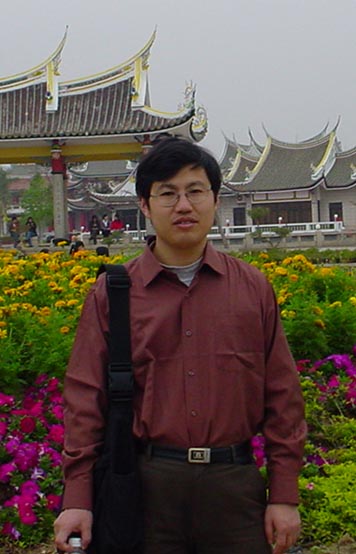-
69浏览
-
0点赞
-
0收藏
-
0分享
-
105下载
-
0评论
-
引用
期刊论文
Scale-Space Analysis of Discrete Filtering over Arbitrary Triangulated Surfaces∗
SIAM J. IMAGING SCIENCES Vol. 2, No.2, pp. 670-709,-0001,():
Discrete filtering of information over triangulated surfaces has proved very useful in computer graphics applications. This technique is based on diffusion equations and has been extensively applied to image processing, harmonic map regularization and texture generating, etc. [C. L. Bajaj and G. Xu, ACM Trans. Graph., 22 (2003), pp. 4–32], [C. Wu, J. Deng, and F. Chen, IEEE Trans. Vis. Comput. Graph., 14 (2008), pp. 666–679]. However, little has been done on analysis (especially quantitative analysis) of the behavior of these filtering procedures. Since in applications mesh surfaces can be of arbitrary topology and the filtering can be nonlinear and even anisotropic, the analysis of the quantitative behavior is a very difficult issue. In this paper, we first present the discrete linear, nonlinear, and anisotropic filtering schemes via discretizing diffusion equations with appropriately defined differential operators on triangulated surfaces, and then use concepts of discrete scale-spaces to describe these filtering procedures and analyze their properties respectively. Scale-space properties such as existence and uniqueness, continuous dependence on initial value, discrete semigroup property, grey level shift invariance and conservation of total grey level, information reduction (also known as topology simplification), and constant limit behavior have been proved. In particular, the information reduction property is analyzed by eigenvalue and eigenvector analysis of matrices. Different from the direct observation of the local filtering to the diffusion equations and other interpretation methods based on wholly global quantities such as energy and entropy, this viewpoint helps us understand the filtering both globally (information reduction as image components shrink) and locally (how the image component contributes to its shrink rate). With careful consideration of the correspondence between eigenvalues and eigenvectors and their features, differences between linear and nonlinear filtering, as well as between isotropic and anisotropic filtering, are discussed. We also get some stability results of the filtering schemes. Several examples are provided to illustrate the properties.
【免责声明】以下全部内容由[邓建松]上传于[2010年08月31日 09时49分14秒],版权归原创者所有。本文仅代表作者本人观点,与本网站无关。本网站对文中陈述、观点判断保持中立,不对所包含内容的准确性、可靠性或完整性提供任何明示或暗示的保证。请读者仅作参考,并请自行承担全部责任。
本学者其他成果
同领域成果

 提示
提示

